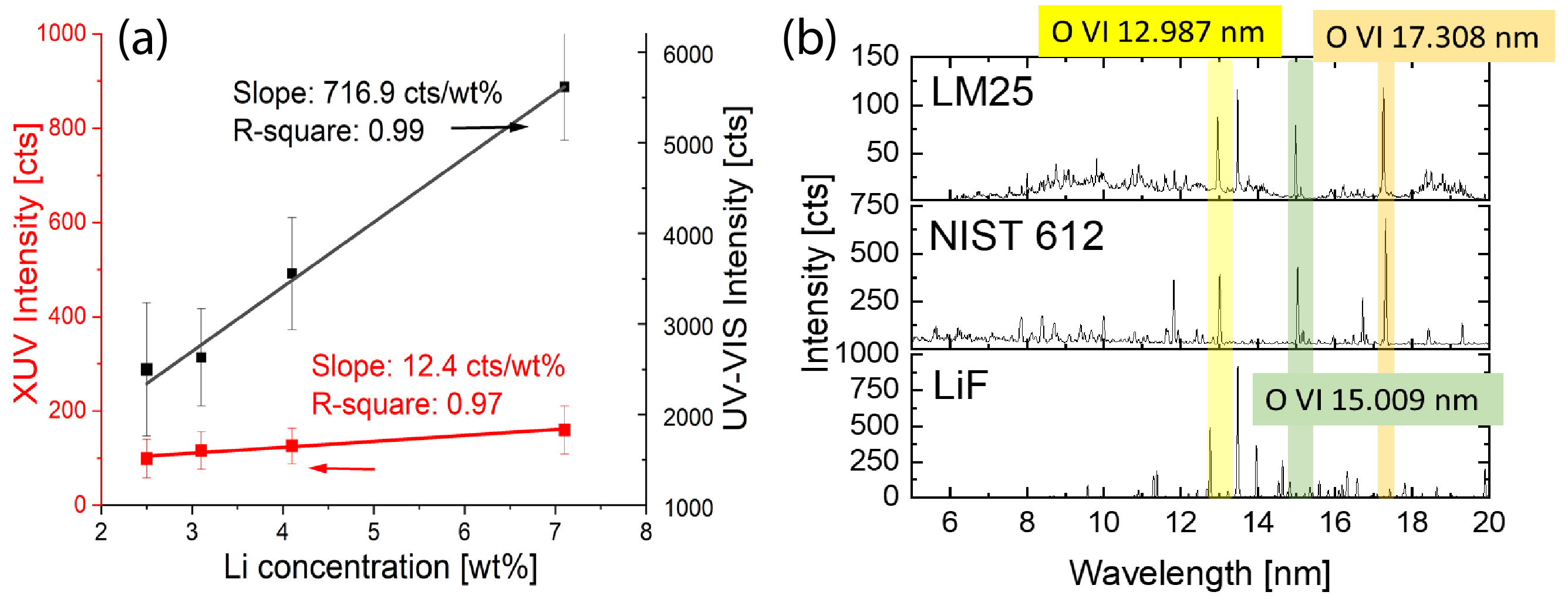Laser-Induced XUV Spectroscopy (LIXS)

A new tool for chemical imaging of energy materials
Laser-induced breakdown spectroscopy (LIBS) is a direct method for elemental analysis of solid materials thanks to no sample preparation, trace to major element sensitivity, and the spatially resolved acquisition. However, conventional LIBS in the optical range (UV to IR) suffers from low precision originating from (i) high continuum background, (ii) low repeatability of the plasma optical emission. It has been reported that the plasma emission shows poor reproducibility, as a consequence of the hydrodynamic expansion. Indeed, the expansion is dominated by flicker noise, which is particularly critical for spatially resolved analysis in inhomogeneous samples.

The plot shows the qualitative temperature evolution of laser-induced plasmas. The plasma temperature determines the range of spectral emission (kT = 1 eV corresponds to approx. 11'600 K). In the irradiation phase, the plasma is very hot and dense, such that it emits soft X-rays. After a few ns of expansion and cooling (end of laser pulse), the emission is dominated by a strong continuum, so that one must delay the collection for this background to drop.
Soft X-ray and extreme ultraviolet (XUV) emission from the dense laser-induced plasma shows high reproducibility and consistency. Therefore, laser induced XUV spectroscopy (LIXS), as an evolution of LIBS, can mitigate the flicker noise and substantially improve the precision.
The potential of LIXS was investigated in a quantitative analysis of Li-Mn oxide samples, as shown in Fig. 2a. Their use as energy materials requires homogeneity. One should be able to detect impurities and heterogeneities from the same shot. Indeed, increased sensitivity may shrink the dynamic range. In LIXS, the dynamic range is substantially extended while the sensitivity is reduced. This does not hinder the detection limits because the background noise is negligible.

Finally, a fingerprint for oxidation was also demonstrated; where the oxidative pockets showed the same three O-VI emission lines at 12.99 nm, 15.01 nm and 17.31 nm, which was not observed in LiF (see Fig. 2b). In short, LIXS is a novel evolution to LIBS microanalysis with high precision and wide dynamic range.
Self-Developed Flat-Field XUV Spectrometer based on the Harada Design


-
Share
